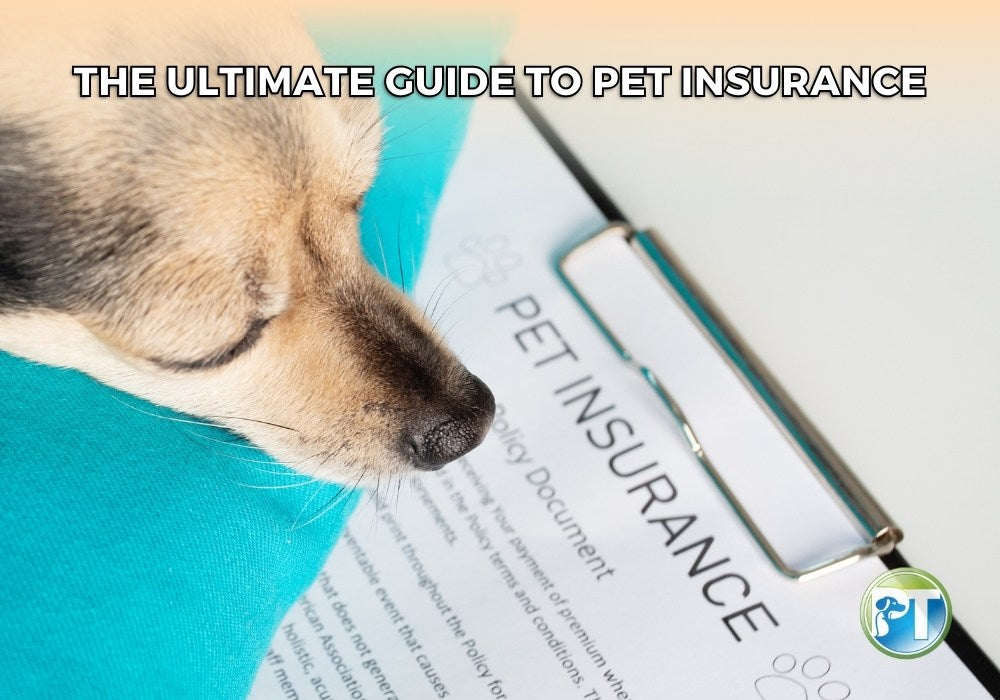Unlocking Obedience: Best Dogtra E-Collars for Small Dogs

Our pets are cherished members of the family, and ensuring their health and well-being is a top priority. However, unexpected illnesses or accidents can lead to hefty veterinary bills, causing financial strain on top of emotional worry. That's where pet insurance steps in, providing a safety net for pet owners like you.
What is Pet Insurance?
Think of pet insurance as healthcare for your furry friend. Just like human health insurance, pet insurance helps manage the financial burden of veterinary care. You pay a monthly premium and, in return, gain access to a range of benefits. These benefits can vary depending on the plan you choose but typically include coverage for:
- Accidents and injuries
- Illnesses
- Surgeries
- Diagnostic tests
- Medications

Why Get Pet Insurance?
Here are some compelling reasons to consider pet insurance:
- Financial Protection
Veterinary bills can quickly climb into the thousands of dollars. Pet insurance can help manage these costs, preventing them from derailing your budget.
- Peace of Mind
Financial protection for emergencies can significantly reduce stress, letting you focus on your pet's recovery.
- Access to Advanced Care
Pet insurance can give you access to care that you might not be able to afford otherwise. For instance, certain insurance providers offer coverage for alternative therapies like acupuncture or chiropractic treatments.
How to Choose the Right Coverage
Before diving into pet insurance options, take some time to understand your pet's unique needs. Here are a few things to consider:
- Breed: Some breeds are more susceptible to certain health conditions than others. For example, Pugs are prone to respiratory problems, while German Shepherds might develop hip dysplasia. Knowing your breed's potential health risks can help you choose a plan with relevant coverage.

- Age: Generally, younger pets require less veterinary care compared to senior pets. However, certain genetic conditions may manifest early on.
- Pre-existing conditions: If your pet has existing medical conditions, ensure the chosen plan covers them. Pre-existing conditions are typically excluded for a set period after enrollment.
- Lifestyle: Highly active pets or those prone to accidents might benefit from a plan with higher accident coverage. These plans often feature lower deductibles, reducing the amount you pay out of pocket before insurance kicks in.
- Genetic health risks: Research your pet's breed for potential hereditary health concerns. Some plans offer add-ons for specific conditions, such as eye problems prevalent in Siberian Huskies.

By considering these factors, you can tailor your pet insurance plan to effectively address your pet's potential health needs.
How to Find the Perfect Pet Insurance Provider
Navigating the pet insurance landscape can feel overwhelming. Here are some tips on how to get pet insurance in the U.S.:
1. Do your research.
Look for reputable pet insurance companies. Online reviews, veterinarian recommendations, and consultations with pet insurance brokers can be valuable resources.

2. Prioritize your pet's needs.
Compare different plans to find one that offers the most relevant coverage for your pet's breed, age, and potential health concerns. Pay close attention to exclusions, limitations, and waiting periods associated with specific treatments. Some policies only cover accidents, while others also cover illnesses. Some policies have annual or lifetime limits, while others do not.

3. Compare costs.
Pet insurance premiums vary depending on your pet's age, breed, location, and the chosen coverage level. Compare quotes to find a plan that fits your budget. While it may seem like an additional expense, pet insurance can save you significantly in the long run.

4. Read the fine print.
Before enrolling in a pet insurance policy, make sure to review the details and terms. This includes the policy’s coverage limits, deductibles, and reimbursement percentages.
Familiarize yourself with the claims process too, as some companies have specific requirements for filing claims. Remember, it's all about knowing exactly what you're covered for and how to use your pet insurance when needed. Don't be afraid to ask the insurance provider questions if anything seems unclear.

How to Enroll Your Pet in Pet Insurance
Once you've chosen the perfect pet insurance plan, enrolling your furry friend is the next step. Thankfully, it's usually a quick and hassle-free process. You'll typically need to provide some basic information about your pet, such as:
- Name
- Age
- Breed
- Any existing health conditions (be upfront about any pre-existing issues to avoid claim denials later)

In addition to this information, you'll usually need to pay the first month's premium to activate your pet's coverage. Be sure to check with your chosen provider for any additional enrollment requirements they might have.
How to Manage Your Pet Insurance Policy
After you've enrolled your pet, it’s also crucial to know how to keep track of your pet insurance. Here are a few things to keep in mind:
1. Waiting Periods
These are like "cooling off" periods for certain coverages. Your pet won't be covered for accidents or illnesses that happen before the waiting period ends. Make sure you understand the waiting periods for different types of care.
2. Effective Dates
Don't expect coverage to start immediately. Typically, your policy kicks in on the first day of the month following your enrollment.
3. Online Pet Insurance Management
Many companies offer handy online tools. These portals allow you to:
- View your coverage details – what exactly is covered and for how much?
- File claims – submit requests for reimbursement after your pet receives veterinary care.
- Update your pet's information – keep your pet's profile current, especially if their health changes.
How to File a Claim
If your pet needs veterinary care, you’ll need to submit a claim with your pet insurance company. The process for filing a claim might differ slightly depending on your provider, so always refer to your specific policy details.
Here are the steps on how to file a claim with your pet insurance company:
1. Gather your paperwork.
You will need to gather all the paperwork related to your pet’s veterinary care. These include the following:
- The original itemized vet bill: This detailed breakdown of your pet's veterinary expenses is vital. Make sure it includes the date of service, your pet's information, a description of the services provided, and the associated costs.
- Medical records: These will help the insurance company understand the nature of your pet's illness or injury. Include any diagnostic test results like X-rays, bloodwork, or pathology reports.

2. Complete the claim form.
Most pet insurance companies provide a downloadable claim form on their website or mobile app. Fill this out truthfully and completely, following the specific instructions provided by your insurer.

3. Contact your insurance company.
Once you have all the necessary documentation, reach out to your pet insurance company. They might have a dedicated claims hotline or online portal for submitting claims. Follow their preferred method for submitting your claim and any required documents.
4. Wait for processing.
Processing claims can take anywhere from a few days to several weeks, depending on the complexity of the case and your provider's workload. The insurance company will likely review your claim and documentation to determine if it falls under your policy's coverage.
5. Receive your reimbursement.
Once your claim is approved, you'll receive reimbursement, usually by check or direct deposit into your bank account. The reimbursement amount will typically be based on your policy's coverage limits and deductible.

Contact your pet insurance company if you have any questions about filing a claim. Their customer service representatives are there to help you understand your policy and guide you through filing a claim.
Conclusion
Pet insurance goes beyond financial protection; it's an investment in your pet's well-being and your peace of mind. Choosing the right plan ensures your beloved companion receives the veterinary care they need, without the added stress of unexpected costs. Remember, investing in your pet’s health and happiness is an investment in the joy they bring to your life.
You might also enjoy...
-
Posted in
Pet Health


